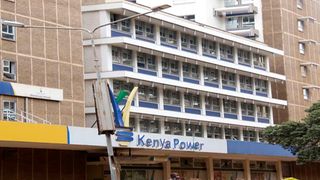
Kenya power building along Aga Khan walk, Nairobi. Kenya Power and Lighting Company (KPLC) has been removed from a key role that determine the amount and type of electricity dispatched to the national grid.
| Lucy Wanjiru | Nation Media GroupBusiness
Premium
Kenya Power stripped of energy dispatch role
The Energy and Petroleum Regulatory Authority (Epra) has removed Kenya Power and Lighting Company (KPLC) from a key role that determined the amount and type of electricity dispatched to the national grid.
The regulator said the National Energy Control Centre(NCC), which manages the uptake of energy from the various sources for distribution on the national grid, will now be managed by the Kenya Electricity Transmission Company(Ketraco) to curb conflict of interest and seal loopholes that have been abused by some cartels to force costly power on consumers.
“Pursuant to Section 138 (2) the Energy Act, Ketraco as a system operator will be responsible for the following functions’ managing and operating the national control centre and other infrastructure established by the national government for the purpose of carrying out system operation,” Epra said.
Under the new role, Ketraco will also be tasked with determining the best mix of cost-friendly electricity supplied to the grid.
KPLC had for decades managed the NCC amid complaints that its staff colluded with some independent power producers (IPPs) to load large quantities of expensive thermal power on the grid even when there were cheaper options from sources such as geothermal.
For instance, KPLC was last year at the centre of a storm for prioritising expensive thermal power over the cheaper options such as geothermal and hydro, effectively setting up consumers for higher electricity prices.
This followed a data release by Epra that showed that the power distributor had in September last year taken the highest proportion of the expensive thermal power in more than a year while reserving the lowest slot for the cheaper geothermal power.
In total KenGen’s available geothermal capacity for the month was 499.7 megawatts(MW), against 410.3 MW taken up by the off-taker. This means we had an additional 89.4 MW that was not taken up.
As a result, consumers paid a higher fuel cost charge — which is influenced by the share of electricity from diesel generators — of Sh2.6 per kilowatt-hour (kWh), up from the Sh2.4 since May 2020.
A task force appointed by President Uhuru Kenyatta in March this year to review Power Purchase Agreements (PPAs) flagged the anomalies in the operations of NCC and recommended that KPLC be removed from managing the key role to curb abuse.
“The Taskforce observed that the proposed designation of a system operator has not been implemented. The law provides that the system operator shall not be involved in the direct or indirect buying or selling of electrical energy. This implies that Kenya Power as a distribution company cannot be designated as an ISO,” the John Ngumi-led team said in its report.





